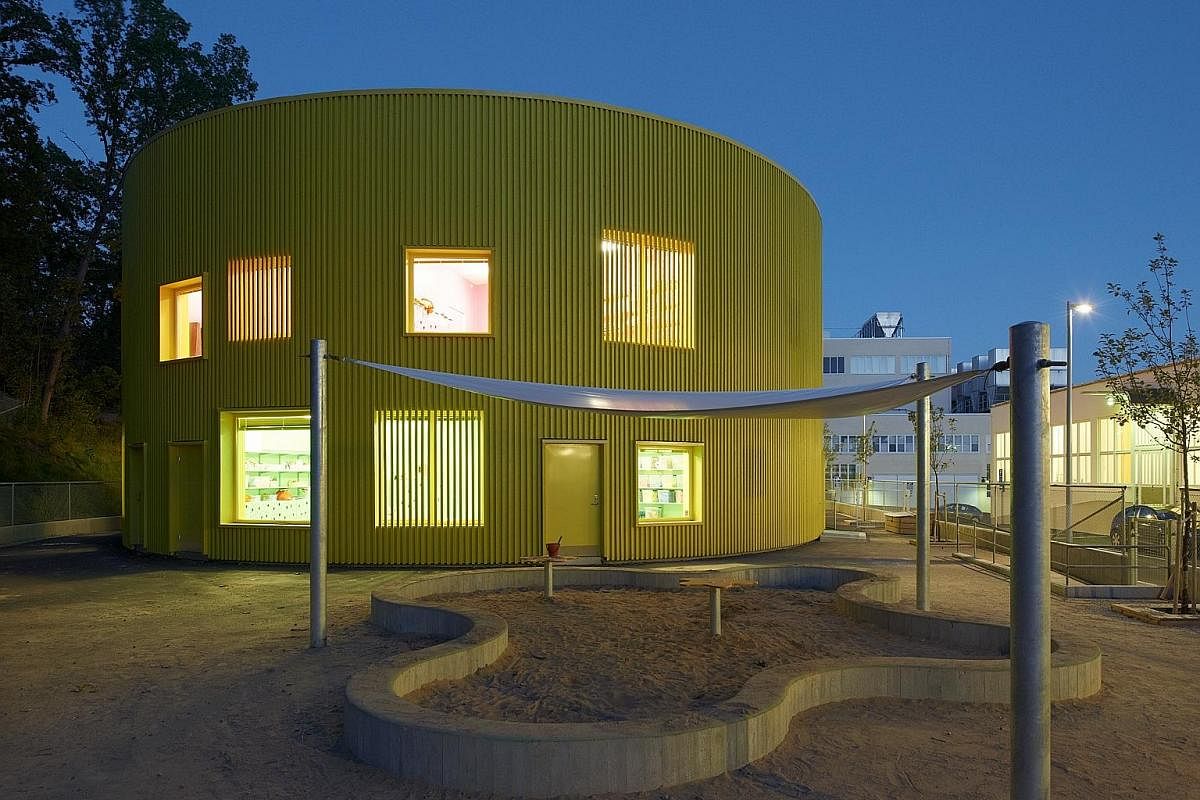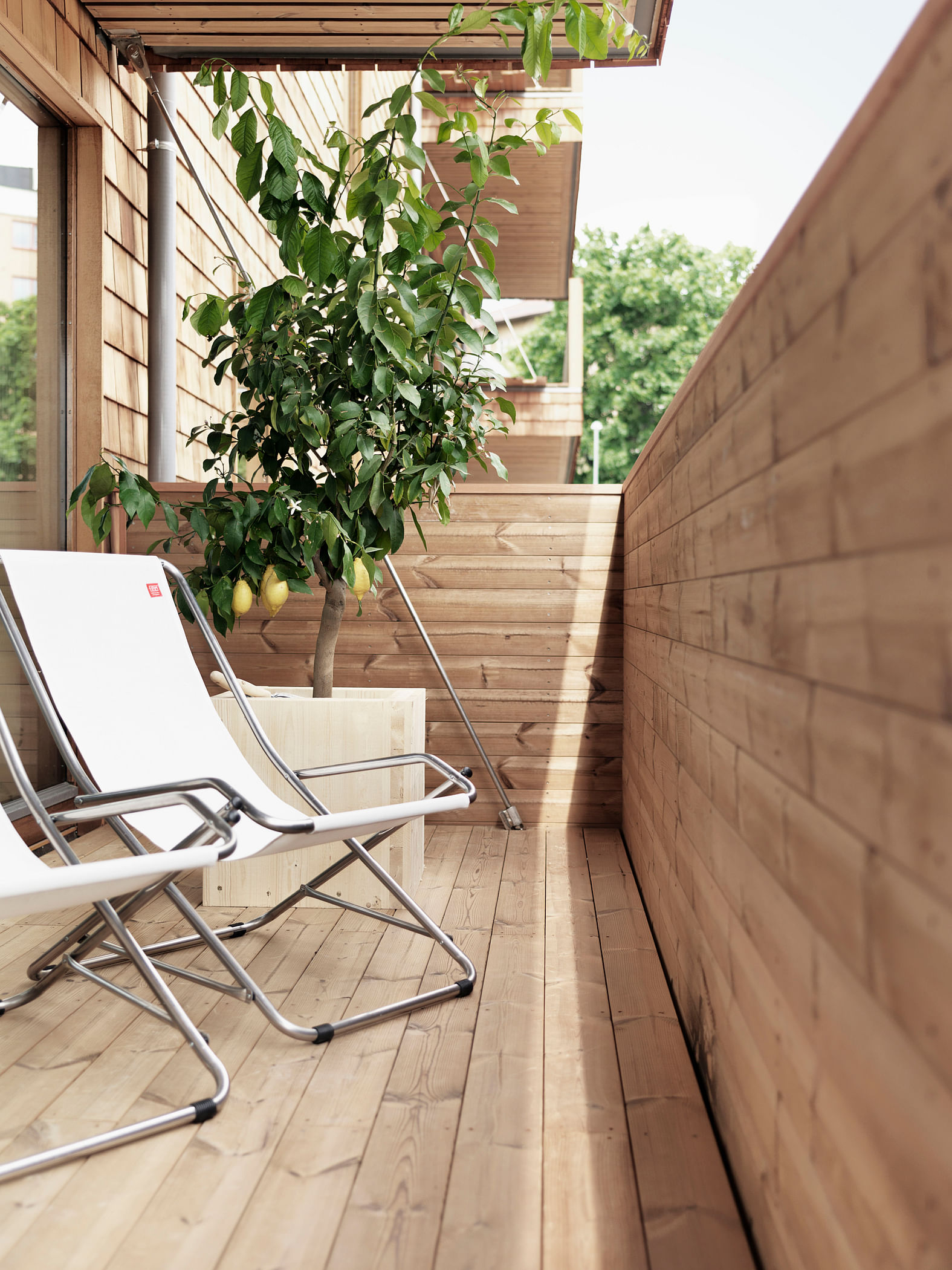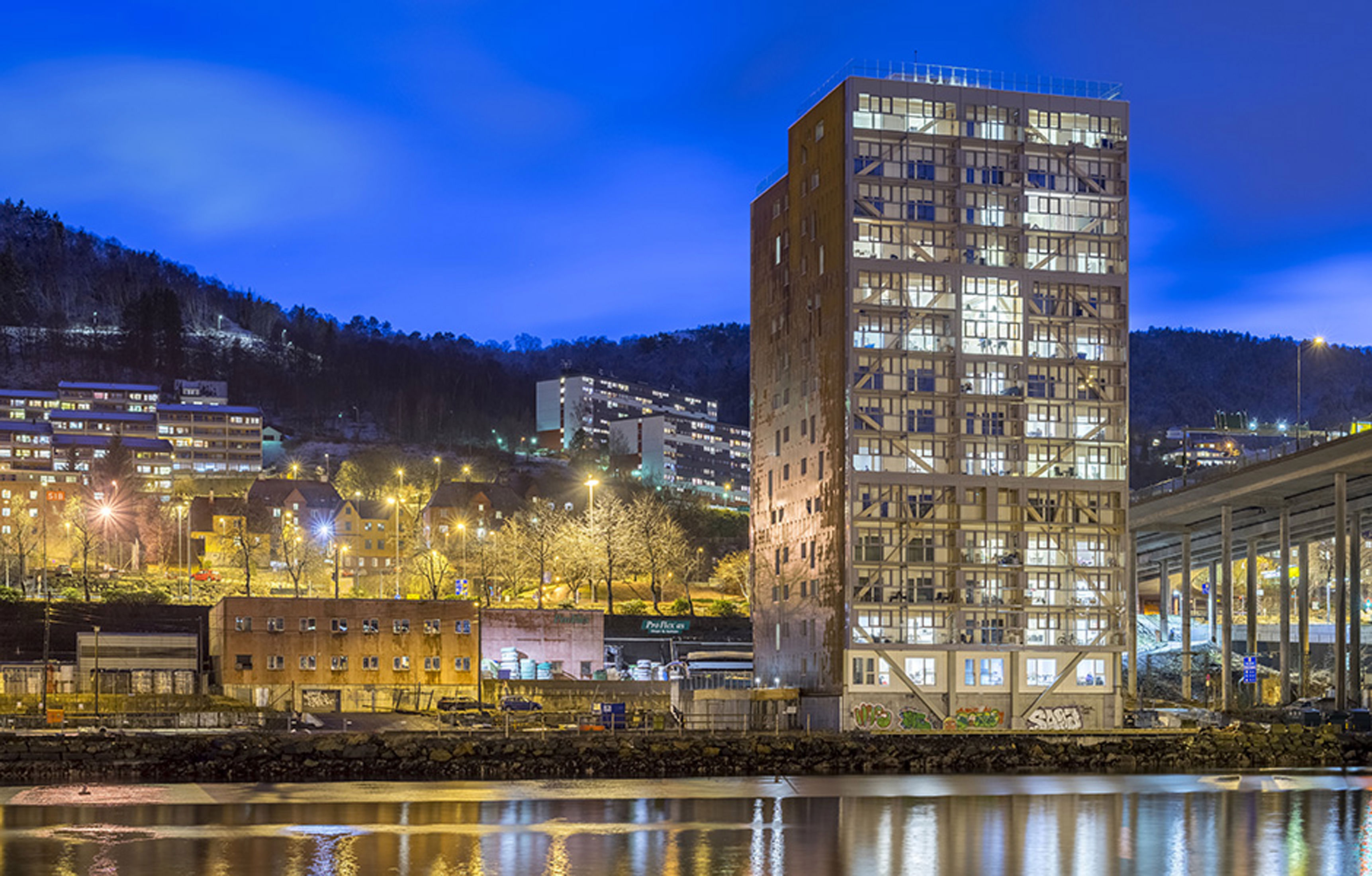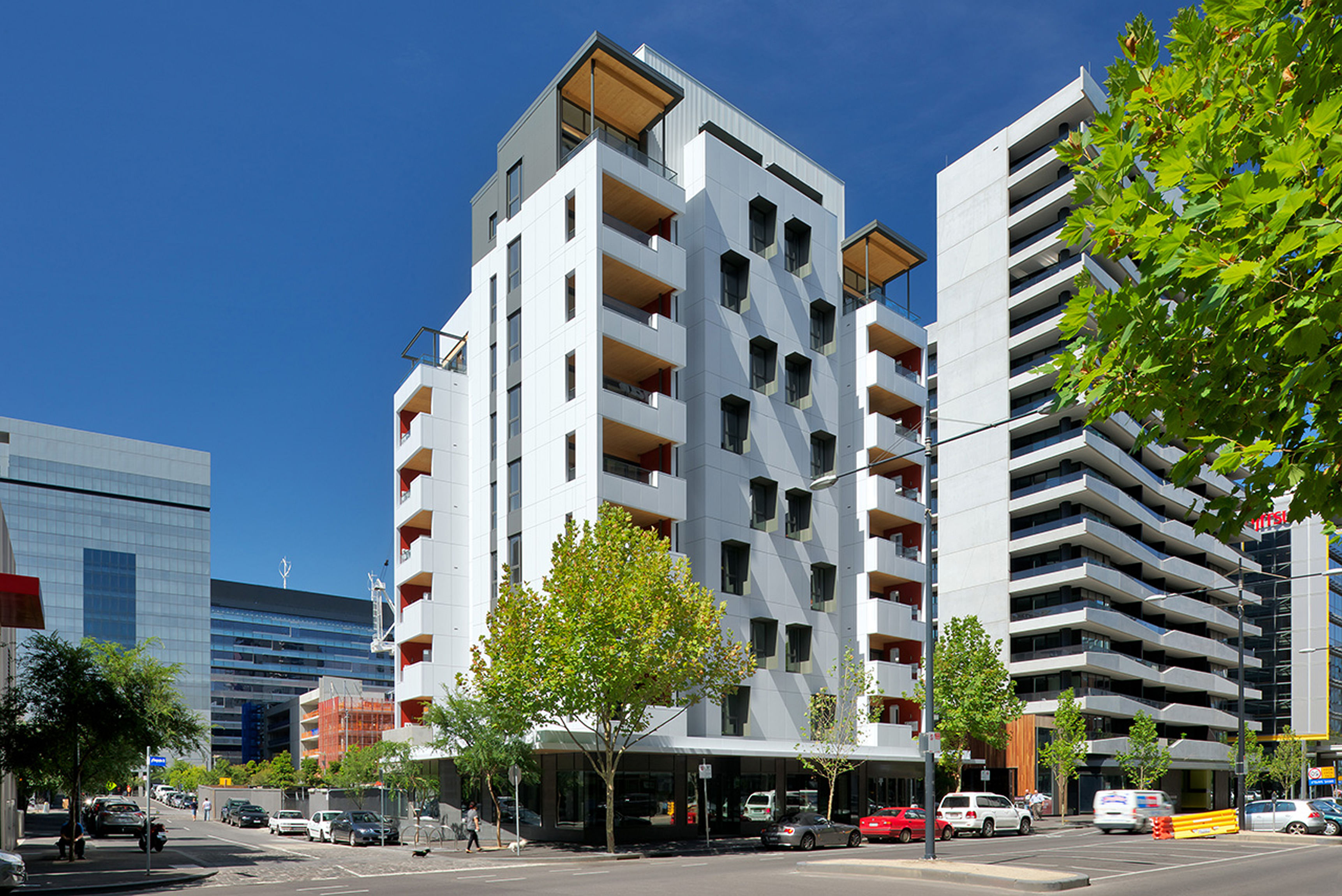Living with wood: Developers go big on wood architecture
The use of timber in construction projects is slowly gaining popularity around the world, including a Swedish complex being built entirely of the material



After successfully exporting game changers such as Ikea and Scandinavian minimalism around the world, the Swedish are back with a new design pitch: wood architecture.
While small projects such as private houses and holiday cottages constructed solely of wood have been the Swedish norm, developers and architects are now going big with the material.
Think apartment buildings that rise to 10 storeys and bigger structures such as pavilions and public spaces, built entirely of wood.
In the last decade, timber highrises and structures have been popping up across Sweden and around the world too.
One of the most-talked-about projects in Sweden is Strandparken, a series of chic apartment complexes in Sundbyberg, a suburb north of Stockholm.
Designed by architecture firm Wingardh Arkitektkontor for property developer Folkhem, the first block, called B, was finished in 2013.

Standing off the shore of an inlet, the facade of Block B is clad in cedar shingles that will weather into a grey hue over time.
In true Scandinavian fashion, there is nothing flashy about the eight-storey block, which has a pitched roof and balconies bulging from its facade.
Inside, a calming woody fragrance wafts from the walls, floors and stairs - all made of wood, of course. Even the lift is a modest wooden box.
Showing off the natural look of the material, the architects lined the communal stairwell with solid wood blocks, each featuring a partial pattern of a tree ring.
Sunlight pours through the large glass windows and sliding doors that are a mainstay in the 31 apartments, which range in size from one to four bedrooms.
Except for the tiled bathrooms and the glass doors to the balcony, the floors and walls inside are panelled in a light ash wood, while the floor in the balcony is cedar wood.
These are cosy homes that are picture-ready for an interior magazine spread, but Mr Arne Olsson, chief executive officer of Folkhem, is not selling just a beautiful space.
A strong advocate of building in wood, the 65-year-old, who is also a civil engineer, says using wood for homes will revolutionise the construction industry.
To walk the talk, the next 18 Folkhem projects, which are in the proposal stage and designed by some of Sweden's well-regarded architecture firms, will all be built in wood.
Strandparken was Folkhem's first completed project entirely in wood, which Mr Olsson proudly showed a group of international media, including The Straits Times, in February.
Ask him what he likes so much about the basic material and Mr Olsson rattles off a list of advantages.
Wood is a renewable resource that is lighter than concrete, making it easier to transport, for instance.
Also, as wood is softer than concrete, drilling holes or sawing wood will be less noisy than constructing with concrete.
For Strandparken, prefabricated modules are put together on site "like Lego parts" and anchored to the foundation by metal rods that run the height of the building.
It took just seven months to complete one block - about half the time it takes to build with concrete, he says.
However, one major setback to building with wood is the long approval process by the authorities. The planning and approval for Strandparken took about five years before construction started.
But wood's biggest advantage is that it is a "greener" material compared with concrete. "People are still discussing how the transport and flight industries are causing pollution, but there's little discussion about how harmful the cement business is for the environment," he says.
Today, concrete is the most common building material - cement is one of the main components of it - and leaves behind a colossal carbon footprint when produced.
Last year, the United States Environmental Protection Agency reported that cement-manufacturing plants are the third largest industrial source of pollution, emitting more than 500,000 tonnes a year of sulphur dioxide, nitrogen oxide and carbon monoxide there.
Mr Olsson, who lives in an apartment in Strandparken, says grimly: "Building with wood is the only way to save the world."
To some, it may seem regressive to look back to build for the future. After all, wood has been a traditional building material in Sweden since the Vikings built their shelters. But the material fell out of favour post-19th century, as these structures caught fire easily and were destroyed.
But wood has made a spectacular comeback, thanks to better technology.
In the 1990s, a highly engineered material called cross-laminated timber (CLT) made its entrance, making wood more fire-resistant because of how it is made.
CLT was pioneered in Europe then to replace concrete blocks in the construction of family homes and has slowly gained popularity, according to a Bloomberg report last year.
CLT is produced by pressure- gluing multiple layers of timber placed perpendicular to one another, giving the wood steel-like strength. Also, when CLT catches fire, it chars only on the surface instead of being burnt through.
Architect Louise Masreliez, 48, president of Architects Sweden, an organisation for the profession and architecture students, says that more architects are being won over by the possibilities of wooden structures.
In February, an exhibition titled Welcome To Woodland went on show at the Stockholm Furniture & Light Fair, which had a part that showcased how contemporary Swedish architects used wood in their buildings.
Speaking to The Straits Times at the exhibition, Ms Masreliez says: "Working with wood ticks a lot of boxes for architects - it's sustainable and easy to build with.
"But there's also new technology that keeps the architects interested in experimenting with it. For example, there's a research project that is trying to make transparent wood that looks like glass. Today, it's about combining innovation and experience to create wooden architecture for the future."
Besides Strandparken, the Swedish capital has become the centrepiece of the wood architecture movement.
There are various buildings around the city that showcase how different types of wood can be used.
In the trendy, affluent Ostermalm district, a temporary market was erected last year to house market and food stalls as the iconic 129- year-old brick-clad Saluhall food market next door undergoes a renovation.
Half the facade is lined with untreated pine battens mounted on plywood sheets, while the rest of the wall is covered in a translucent polycarbonate sheeting.
Then there is Tham & Videgard Arkitekter's Tellus Nursery School that sits near a forested hill. The curved, slatted facade is made of sawn wood.
While the push for wood is gaining traction now, Mr Bolle Tham, 46, a co-founder at the architecture firm that worked on the nursery, says wood buildings will not proliferate on the landscape immediately.
Architects have to use it when it makes sense, he says.
"When you scale up to large buildings, architects have to consider other things such as load-bearing concerns. In those cases, maybe steel or concrete would be more efficient."
Both Mr Olsson and Ms Masreliez believe that the concept of wood architecture can go global, including in tropical Singapore, which has no massive forested areas where wood can be harvested.
Mr Olsson says Singapore can use wood that grows abundantly in the region, which will help keep transportation costs low.
There are hints in Singapore's architecture scene that suggest that architects here are possibly warming to the use of wood for bigger structures.
For example, Nanyang Technological University last year debuted a sports hall with an arching, pillar-free roof made of glued laminated timber. Also known as glulam, it is another type of engineered wood that has layers of timber glued together.
Meanwhile, the Building and Construction Authority built a small rooftop pavilion in Braddell out of CLT.
Dr Michael Budig, 44, an assistant professor from the architecture and sustainable design arm at Singapore University of Technology and Design, agrees with wood's benefits, but says that building codes and safety concerns have to be looked into. Insect infestation is a concern due to Singapore's heat and humidity.
Dr Budig, whose research interests include timber construction, concrete construction and tropical architecture, also points out that skilled builders in the construction industry here would need to be trained to use wood for bigger projects.
The wood industry here is not as involved in construction anymore.
The Austrian says: "Recent technological advancements in the past 20 to 30 years have led wood to become a serious, efficient competitor among building materials.
"There are many available solutions and it seems only a matter of time before wood will play a more significant role in Singapore again."
Other wood buildings

Treet is a 14-storey wood apartment building in Bergen, Norway's second largest city. Its name means "The Tree" in Norwegian.
Completed in 2015, it has 62 apartments and is one of the largest timber buildings in the world.
Designed by architecture firm Artec AS, the structure comprises a mix of cross-laminated timber and glued laminated timber, or glulam. These timbers are engineered wood formed from many layers glued with strong adhesives so they can withstand heavy loads.
Parts of its facade are clad in glass and metal.
Prefabricated modules were first built and decked out with insulation, flooring and electrical wiring. These modules were then brought on site and stacked on top of one another, with intervals every four storeys.
Residents can head to the gym on the ninth floor, which has panorama windows. A rooftop terrace offers views of the nearby harbour.

PAVILION OF REFLECTIONS IN ZURICH, SWITZERLAND
For the 2016 Manifesta 11 European Biennial of Contemporary Art, its organiser erected a temporary floating pavilion on Lake Zurich as a space for various activities from June to September.
A team of 30 architecture students from Studio Tom Emerson at the ETH Zurich university designed and built the structure which included an open-air cinema, bar and a swimming pool.
The Pavilion of Reflections was built solely of wood and prefabricated in a hangar near Zurich. It was then assembled on the lake.

FORTE IN MELBOURNE, AUSTRALIA
This 10-storey residential block, which stands at 32.2m tall, was the first Australian building to be made from cross-laminated timber (CLT).
Forte was completed in 2012 and is located in Melbourne's Victoria Harbour. Its 23 apartments include two penthouses.
Construction of the building started in May that year and the structure was completed by August.
In a 2012 interview, Mr Murray Coleman, managing director of developer Lend Lease's project management and construction business in Australia, said: "With the structure being built entirely from CLT, Forte will reduce carbon dioxide equivalent emissions by more than 1,400 tonnes when compared with concrete and steel - the equivalent of removing 345 cars from our roads."
Join ST's Telegram channel and get the latest breaking news delivered to you.
A version of this article appeared in the print edition of The Straits Times on May 06, 2017, with the headline Living with wood: Developers go big on wood architecture. Subscribe

